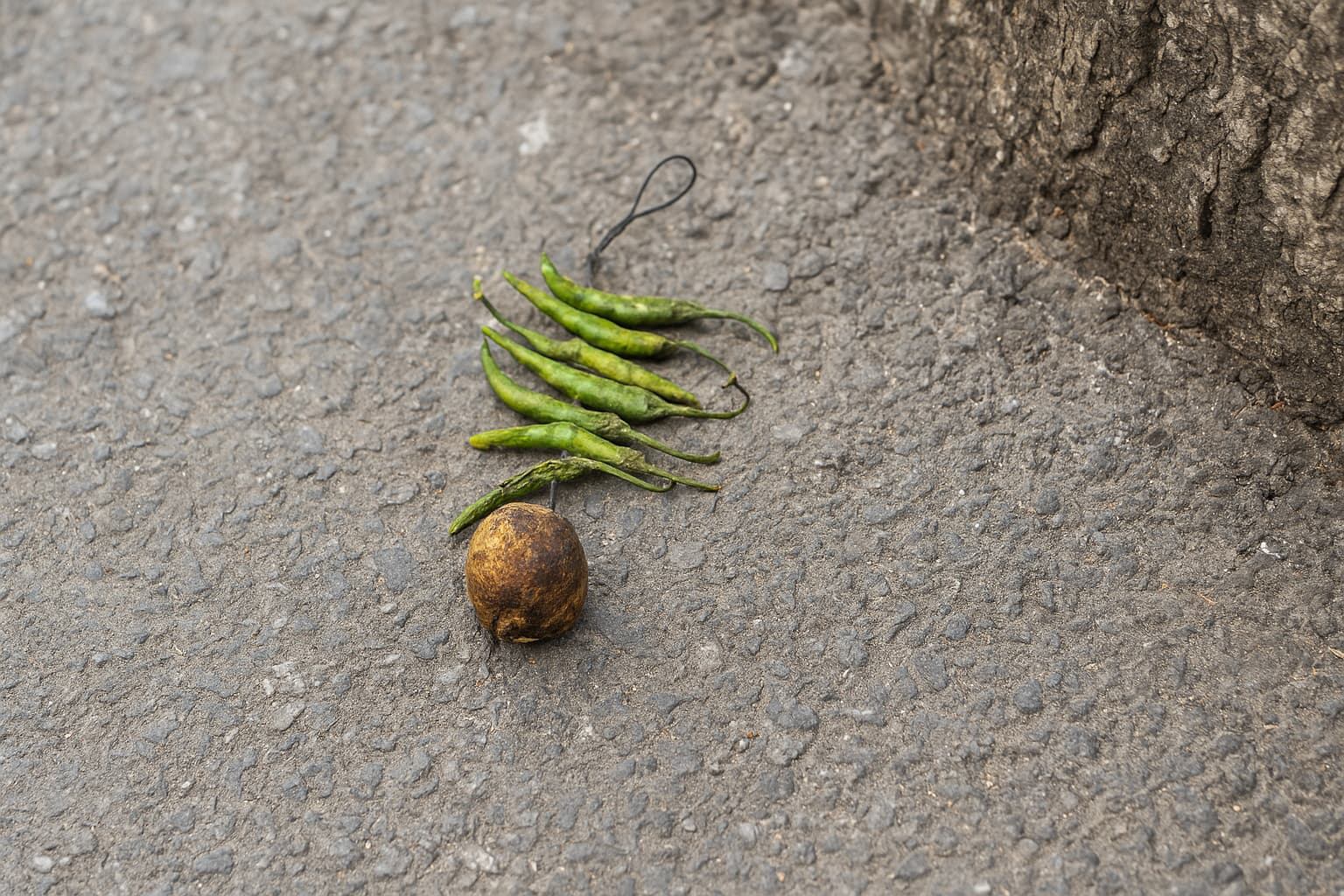Lemon and Chilies on Vehicles — it’s a sight you’ll find from quiet village roads to bustling highways across India. Whether it’s a simple vegetable vendor’s old scooter or a businessman’s brand-new Maruti Suzuki Grand Vitara, the practice remains the same: a single lemon and seven green chilies tied just under the front bumper. This humble hanging isn’t just an accessory — it carries deep-rooted spiritual significance and cultural symbolism.
We often pass by such vehicles without much thought, but behind this small ritual lies a powerful belief: it serves as a shield against negative energy and offers blessings for safe travels.
In this article, we’ll explore:
Why this tradition began
The spiritual meaning behind it
And how to properly hang lemon and chilies on your vehicle — a practice that continues to thrive in Karnataka and many parts of India even today.
🧿 The Protective Power: More Than Just Decoration
This practice isn’t just about decoration — it’s a deeply rooted spiritual act of protection. In Indian tradition, especially when someone buys a new vehicle, they become the focus of attention. While admiration is common, it’s believed that some looks carry jealousy or negative energy, known as drishti or the evil eye.
To guard against such unseen forces, people tie lemon and chilies on vehicles as a symbolic shield. This combination is said to absorb harmful energy and keep the vehicle and its owner safe from accidents, breakdowns, or sudden misfortune.
In fact, if a mishap occurs and the lemon-chili charm wasn’t attached, many start to question whether that’s the reason. It’s common to hear elders say, “That’s why we shouldn’t skip rituals. Maybe drishti struck because protection was missing.” Whether out of belief or habit, this ritual remains a serious part of everyday vehicle life in many homes.
🌶️ Why Lemon? Why Chilies?
Why Lemon?
The lemon is a symbol of purity and freshness. In Indian rituals, it is believed to absorb negative energy and create a cleansed, positive space. Lemons are also used in poojas to remove evil influences from homes, shops, and even during festivals.Why Green Chilies?
Green chilies are known for their sharpness and fiery nature. In spiritual practices, they are believed to burn away or scare off evil forces. People always prefer fresh, slender green chilies — not red, dried, or overly large ones — as they represent high vibrational energy and act as a warning to negativity.Important Note:
It is advised to use one lemon and exactly seven green chilies. This specific combination is not decorative — it’s a traditional spiritual formula passed down through generations. Using the wrong items or numbers may not hold the same protective value.
Learn more about another spiritual ritual — how many times a temple bell should be rung and the meaning behind each chime.
👉 How Many Times Should a Temple Bell Be Rung?
📜 The Number Seven: Not Just a Guess
You’ve probably seen it — one lemon and exactly seven green chilies hanging on vehicles. Ever wondered why it’s always that number?
In many traditions, the number 7 is considered lucky and powerful. We have seven days in a week, seven chakras in the body, and even seven levels of energy in spiritual beliefs.
That’s why people use seven chilies to protect from all sides, and one lemon to absorb the negativity. It’s simple, but many believe this combo keeps away bad luck and keeps the journey safe.
🔧 How to Properly Hang Lemon and Chilies on Your Vehicle
While the intention is spiritual, the method also matters. Here’s a guide if you’re planning to follow this ritual:
🔄 What Happens to the Old One?

Once the lemon and chilies start drying out or turning black, it’s a sign they’ve absorbed energy and need to be replaced. Most people change it every 7 to 10 days, or immediately after a long trip or if they feel something negative has happened (like a near-miss or bad dream).
But what happens to the old one is just as important. You shouldn’t throw it in regular garbage, as it’s believed to carry absorbed negativity. Instead, people follow these traditional ways of disposal:
Burning: Some burn it carefully in an open space, believing this releases trapped energy into the air.
Burying: Others dig a small hole and bury it in soil, usually near a plant or tree, especially a neem tree, known for its purifying nature.
Roadside Disposal: In many places, you’ll see it left at a street corner or by a drain — far from home, where it can’t circle back its energy.
These actions aren’t just superstition — they show how deeply people respect even the smallest ritual, ensuring the process is complete from start to finish.
🛣️ Final Thoughts: A Small Symbol, A Deep Belief
Whether seen as tradition or symbolism, the lemon and chilies hanging on vehicles represent more than just a ritual — they reflect faith, culture, and a desire for protection. In today’s world, some replace them with modern versions like stickers or charms, but the meaning remains. It’s not about superstition — it’s about starting every journey with intention and trust, rooted in generations of belief.
Read more about temple symbolism in our article on why Nandi always faces the Shiva Linga — a powerful example of devotion through positioning.
👉 Why Nandi Faces the Linga
Explore further into the broader idea of spiritual practices by visiting the detailed Wikipedia page on Spirituality across cultures.
👉 Spirituality – Wikipedia


